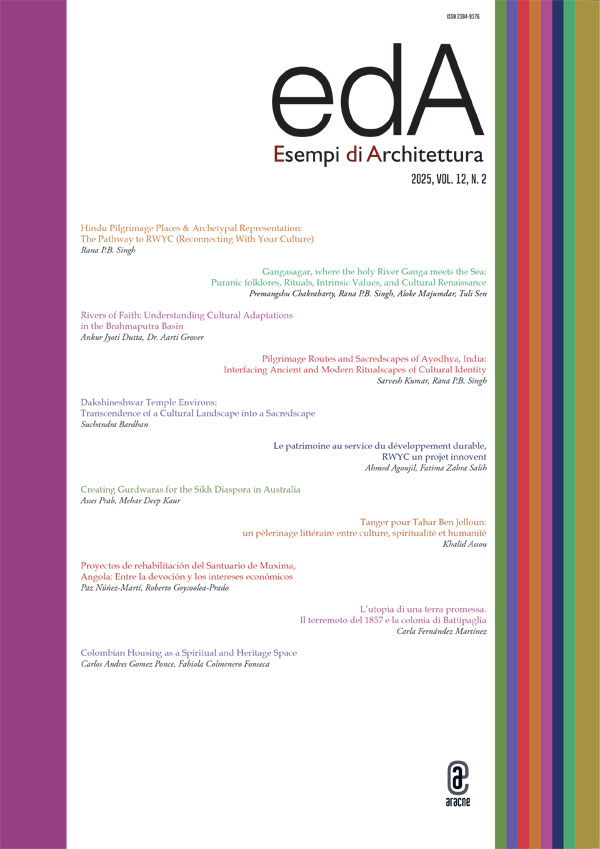Extracted from publication Esempi di Architettura
Pilgrimage Routes and Sacredscapes of Ayodhya, India: Interfacing Ancient and Modern Ritualscapes of Cultural Identity
DOI: 10.53136/97912218172184
Pages: 225-244
Publication date: February 2025
Publisher: Aracne
SSD:
ICAR/14 ICAR/18 ICAR/20 ICAR/21
Historically, Hindu practices of rituals and festivities, sacred journeys, deities, and their symmetrical links have come to form a sacred spatial system that pilgrims and devotees still perceive. Pilgrimage traditions are deeply rooted in local space/place and their adherents’ cultural inheritance and mentality. This structure is reflected symbolically in a spatial frame of Hinduism in which complexity and temporal stability meet, mediating between people and the cosmos, i.e., in a mesocosm (Singh 2002). In Ayodhya, it is expressed in a series of sacred territorial boundaries defined by the pilgrimage routes. Sacred journeys are an impartial part of Hinduism in the frame of pilgrimage tourism, which records the historical continuity and sustenance of sacred routes. There developed a variety of distinct sacredscapes due to the relationship between human faith and landscapes that are revived and passed on in time through rituals. Ayodhya is primarily an ancient tīrtha (pilgrimage place) and salvific place that has had settlement continuity since at least 2000 BCE. The city is described in Hindu mythologies as the birthplace of Bhagavān (Lord) Rāma, a patron deity of the Vaishnavite group. In history, three main pilgrimage routes have been developed that define the three territorial limits of Ayodhya, viz. Chaurashikroshi, Chaudahakroshi, and Panchakroshi. Like most of the pan-Indian holy centres, Ayodhya also displays a three-tier cosmology, respectively as macro (i.e., Maṅḍala, the Outer one), meso (i.e., Kshetra, the Middle one), and micro (i.e., Purī/city, inner sanctum) cosmos. These three pilgrimage circuits, associated routes, and the attached shrines and temples are described in the ancient mythologies, which are frequently still cited in various rituals, group chanting, and sacred walks. Rāmakot ki Parikramā, Antargrihi Parikramā, Ayodhya Rāmāyaṇa circuit journey, Mokshadayani heritage walk, Saptahari temple journey, sacred walks based on the Skanda Purāṇa, and many other such sacred walks are popular in Ayodhya. Re-making and superimposing the ancient glories through heritagisation are standard practices under the present government; however, issues of threats and deterioration of ancient heritage attributes appear. The present study analyses the cultural identity based on pilgrimage routes and sacredscapes, also projecting Rāma Janmabhūmi temple as a sacral mundi.


